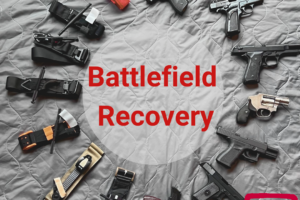
Burn MCI Breakdown: How a Party Became Taiwan’s Worst Mass Casualty Fire
- Posted by Mike Shertz MD/18D
- Categories Everything Else
In 2015, 499 burn casualties occurred from a fire that broke out at the Formosa Fun Coast Park in Taiwan.
Researched and written by Mike Shertz, MD/18D, not AI
🕖 Reading Time, 3 minutes
Originally published 28 Sept 2020. Republished 03 Aug 2025
A “color party” was occurring with 6,000 participants in an empty swimming pool while colored corn powder was sprayed into the air. After two hours, the concentration of corn powder combined with the heat of the lights to ignite the powder. The corn powder in the air, dusted on the participants, and accumulated on the ground all caught fire causing substantial burns.
- 281 casualties (56.3%) had greater than 40% Body Surface Area burns (BSA).
- 41 (8.2%) had greater than 80% BSA burns.
- Ultimately, 437 (87.6%) of the burn casualties were hospitalized.
- In 2015 there were 295 burn care beds in all of Taiwan.
- All 499 of the casualties arrived to hospitals within 5 hours after the incident.
Although 295 casualties were transported to a burn center within 24 hours, most were initially cared for in non-specialized emergency departments and hospitals. Ultimately, 51% of those hospitalized required ICU care, an unusually high number for a disaster.
Prehospital triage of these burn casualties was challenging, and three issues arose:
1 START (Simple triage and rapid treatment) was used but the results were felt to be “misleading.” Unless a casualty presented with tachypnea, they were often under-triaged by START.
No traditional MCI triage system includes burns.
2 Since the prognosis of burn patients is directly related to the burned body surface area and inhalational injury, the American Burn Association does have a triage category for burns over 20% BSA or casualties with inhalational injury. However, estimating the BSA burned on these casualties was difficult. The environment was dark, removing clothing time-consuming, and many of those burned refused to be disrobed based on gender and cultural concerns.
3 Finally, pain resulting from the burns made many casualties unable to walk due to burns on their feet or even move. In this instance, the green casualties, traditionally referred to as the “walking wounded” couldn’t walk. This markedly increased the need for patients to be transported from the scene by EMS. Ultimately 60.3% of casualties were transported by EMS.
Reference
1 Lin CH, Lin CH, et all, Challenges of Burn Mass Casualty Incidents in the Prehospital Setting: Lessons Learned from the Formosa Fun Coast Color Party, Prehosp Emerg Care 2018:23:44-48Dr. Mike Shertz is the Owner and Lead Instructor at Crisis Medicine. Dr. Shertz is a dual-boarded Emergency Medicine and EMS physician, having spent over 30 years gaining the experience and insight to create and provide his comprehensive, science-informed, training to better prepare everyday citizens, law enforcement, EMS, and the military to manage casualties and wounded in high-risk environments. Drawing on his prior experience as an Army Special Forces medic (18D), two decades as an armed, embedded tactical medic on a regional SWAT team, and as a Fire Service and EMS medical director.
Using a combination of current and historical events, Dr. Shertz’s lectures include relevant, illustrative photos, as well as hands-on demonstrations to demystify the how, why, when to use each emergency medical procedure you need to become a Force Multiplier for Good.





